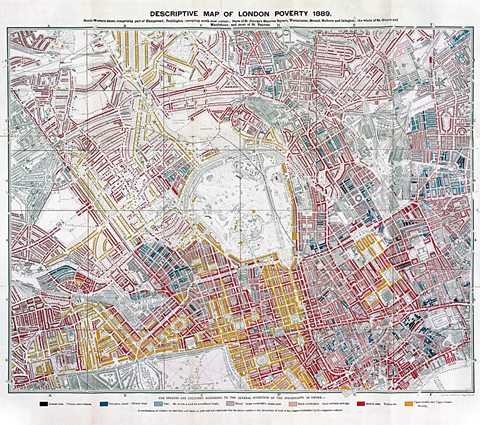The beginning of the welfare state
By the beginning of the 20th century, most areas of Britain had hospital provision of some sort. However, the system was fragmented. Some were private fee-paying hospitals, some were voluntary hospitals run by charities, while others had been set up by local councils.
Often the areas that needed hospitals most were least well provided. North Lonsdale Hospital in Barrow, Cumbria, opened in 1866 but the local population was growing so fast that a new and much bigger hospital opened in 1887 and an extra wing needed to be added to it by 1899.
Welfare reforms

In the 19th century, politicians believed that people became poor because they did not work hard enough or were too lazy to find work. By the start of the 20th century, research by Charles Booth and Seebohm Rowntree had started to show that one of the causes of poverty was poor health, which prevented people from working. This meant that the people most in need of medical attention were those least able to afford it.
Gradually, attitudes towards poverty and poor health began to change. In the years leading up to World War One, the Liberal governments of 1906-1914 introduced a series of welfare reforms to help people who fell into difficulty because of sickness, old age or unemployment. The beginnings of the modern welfare state can be traced back to this period.
The 1911 National Insurance Act
In terms of medical care, the most important of these reforms was the National Insurance Scheme, established in 1911 by David Lloyd George, the Chancellor of the Exchequer. Contributions were made by workers, employers and the government. The weekly contribution for employees was 4 pence (d), and the employer paid an extra 3d and the government 2d. Lloyd George therefore promised that workers would receive “9d for 4d”. Today, 4d is worth around £1.10 and 9d is worth around £2.93.
The scheme provided workers with free medical care and sickness benefits if they became ill. Though this was a major step forward, it had its limitations. It only covered some occupations and did not include the families of those covered, the elderly or the long-term sick.
Development of the scheme in the 1920s and 1930s
In 1920 the scheme was extended to cover all workers who earned up to £250 per year (except farm workers and domestic servants), though families were still not included. The scheme brought benefits to many people. However, during the economic depressionThe slowing of economic activity, which usually results in high unemployment, a sharp drop in prices and a fall in production. of the 1930s, it came under severe pressure.
As unemployment rose to over 3 million, people could not keep up their contributions to the scheme. The government also cut its contributions, further reducing the effectiveness of the scheme.
For many families in the poorer areas of Britain, the quality of health care deteriorated in the 1930s, as people could not afford medical care. In areas like the South Wales valleys, for example, there was a rise in infant deaths.